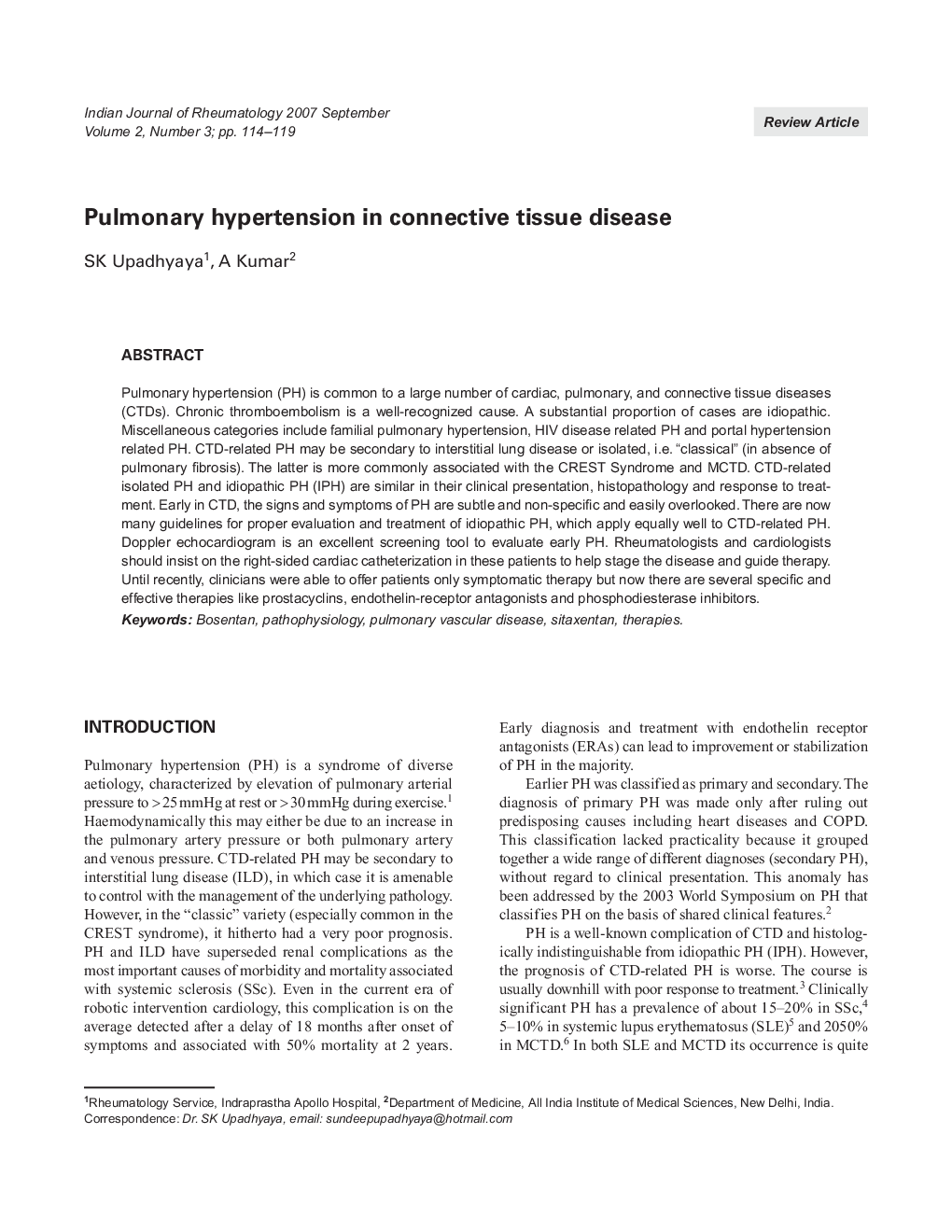| Article ID | Journal | Published Year | Pages | File Type |
|---|---|---|---|---|
| 3357996 | Indian Journal of Rheumatology | 2007 | 6 Pages |
Pulmonary hypertension (PH) is common to a large number of cardiac, pulmonary, and connective tissue diseases (CTDs). Chronic thromboembolism is a well-recognized cause. A substantial proportion of cases are idiopathic. Miscellaneous categories include familial pulmonary hypertension, HIV disease related PH and portal hypertension related PH. CTD-related PH may be secondary to interstitial lung disease or isolated, i.e. “classical” (in absence of pulmonary fibrosis). The latter is more commonly associated with the CREST Syndrome and MCTD. CTD-related isolated PH and idiopathic PH (IPH) are similar in their clinical presentation, histopathology and response to treatment. Early in CTD, the signs and symptoms of PH are subtle and non-specific and easily overlooked. There are now many guidelines for proper evaluation and treatment of idiopathic PH, which apply equally well to CTD-related PH. Doppler echocardiogram is an excellent screening tool to evaluate early PH. Rheumatologists and cardiologists should insist on the right-sided cardiac catheterization in these patients to help stage the disease and guide therapy. Until recently, clinicians were able to offer patients only symptomatic therapy but now there are several specific and effective therapies like prostacyclins, endothelin-receptor antagonists and phosphodiesterase inhibitors.
